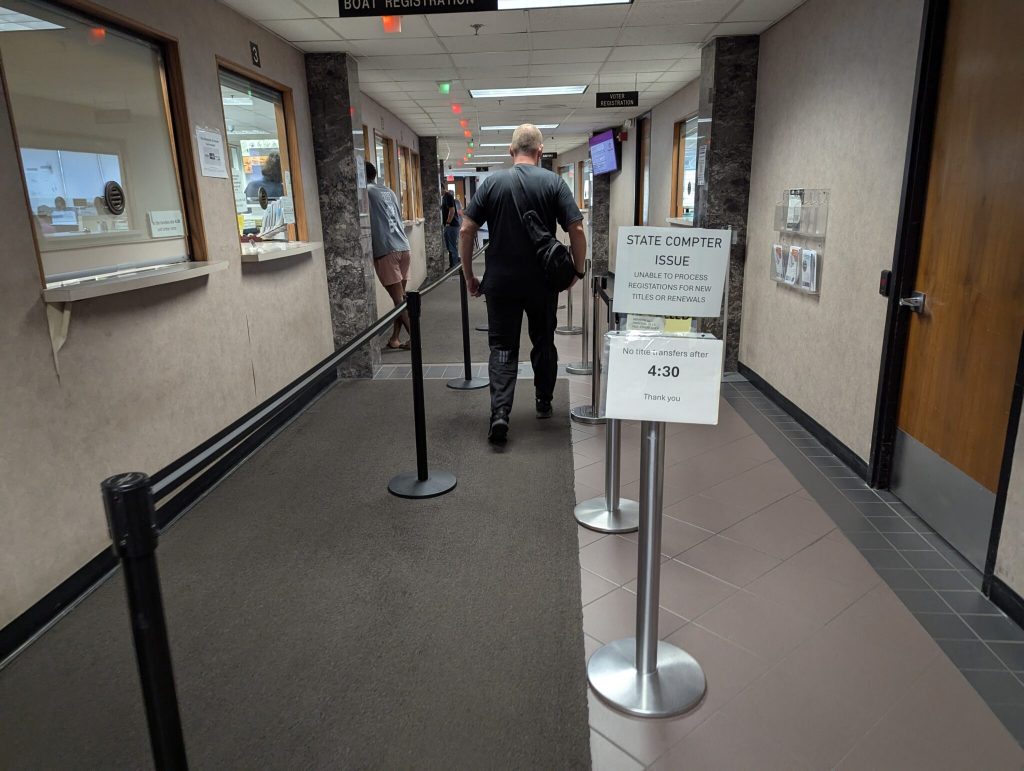PIERRE, S.D. – State online and communications systems began to come back online Wednesday after more than 24 hours of failures – and a declaration of judicial emergency by South Dakota’s court system.
A news release from the state Bureau of Information Technology said the state had restored the primary power supply to the state’s data center, which is the term used by the bureau to describe all the hardware across the state connected through the bureau’s network.
“As a result, core networking and storage systems are now online, and internet access, wireless services, phone systems, and state radio have been fully restored,” the release says.
Some systems had yet to return to full service, but “all state agencies and partners are actively engaged in addressing the challenges caused by the service disruption.”
The state’s South Dakota’s court system declared a judcial emergency in response to the outage on Wednesday. Since Tuesday, people in and outside the judicial system had been unable to get court records or court dates, file documents like protection orders, trial motions, civil lawsuits or small claims cases. Public access points like ecourts.sd.gov were inaccessible, and court system employees couldn’t access records through their own non-public information portals.
The court system was also unable to take electronic payments of fines, though a press release from the Unified Judicial System said clerks were still taking in-person payments.
The judicial emergency suspended “all deadlines, time schedules, due dates and filing requirements imposed by applicable statutes, rules and court orders” until the state Supreme Court rescinds the order.
Alisa Bousa, spokesperson for the Unified Judicial System, said late Wednesday that while systems appear to be back online, the agency’s IT team plans to run diagnostics to make sure things are working properly.
The emergency declaration was part of the fallout from the data center outage. Driver’s license exam stations and self-service kiosks remained inaccessible for a second day Wednesday, as did vehicle registration and vehicle licensing, birth and death records and the state’s voter registration database.
Law enforcement was affected, as well. Faulk County Sheriff Kurt Hall said his dispatch was unable to run license plate and warrant checks for deputies doing traffic stops for most of Tuesday.
“We couldn’t run plates yesterday, but we can today,” said Hall, whose office polices a county of 2,100 and runs a 32-bed jail.
Minnehaha County Sheriff Mike Milstead, who oversees the deputies patrolling South Dakota’s most populous county and one of its largest jails, said state system services were spotty at best during the network outage. Metro Communications, which takes 911 calls and dispatches services for both the county and the Sioux Falls Police Department, was able to communicate with law enforcement, even as some state resources were unavailable.
Milstead’s office relied on its local warrants database for information, but adding warrants to the system was cumbersome with the state court system down. Deputies had to hand-deliver warrants for entry into the warrant database, and hand deliver orders to release inmates from custody to the jail.
“This is certainly demonstrating how dependent we are on the state network,” Milstead said early Wednesday afternoon, adding that he can’t recall an outage that lasted as long.
Attorney General Marty Jackley said early Wednesday that his office’s consumer protection division was unable to process complaints.
Jackley’s office also oversees the State Automated Victim Notification System, through which victims or the public can sign up for alerts about court dates, incarceration status or release dates for people accused or convicted of crimes. That SAVIN system wasn’t sending out alerts during the outage.
Milstead said “we still have processes in place” to notify victims using the information held on local servers without SAVIN.
“That’s kind of a check and balance, not in every case, but in most cases,” Milstead said. “I would call it more of a workaround, but the jail still does victim notification if we have a victim on file.”
The Bureau of Information Technology’s spokesperson, Lisa Rahja, said in an email Wednesday that the state engineer’s office has investigated the “root cause” of the outage.
The power outage wasn’t caused by a cybersecurity breach, she wrote.





